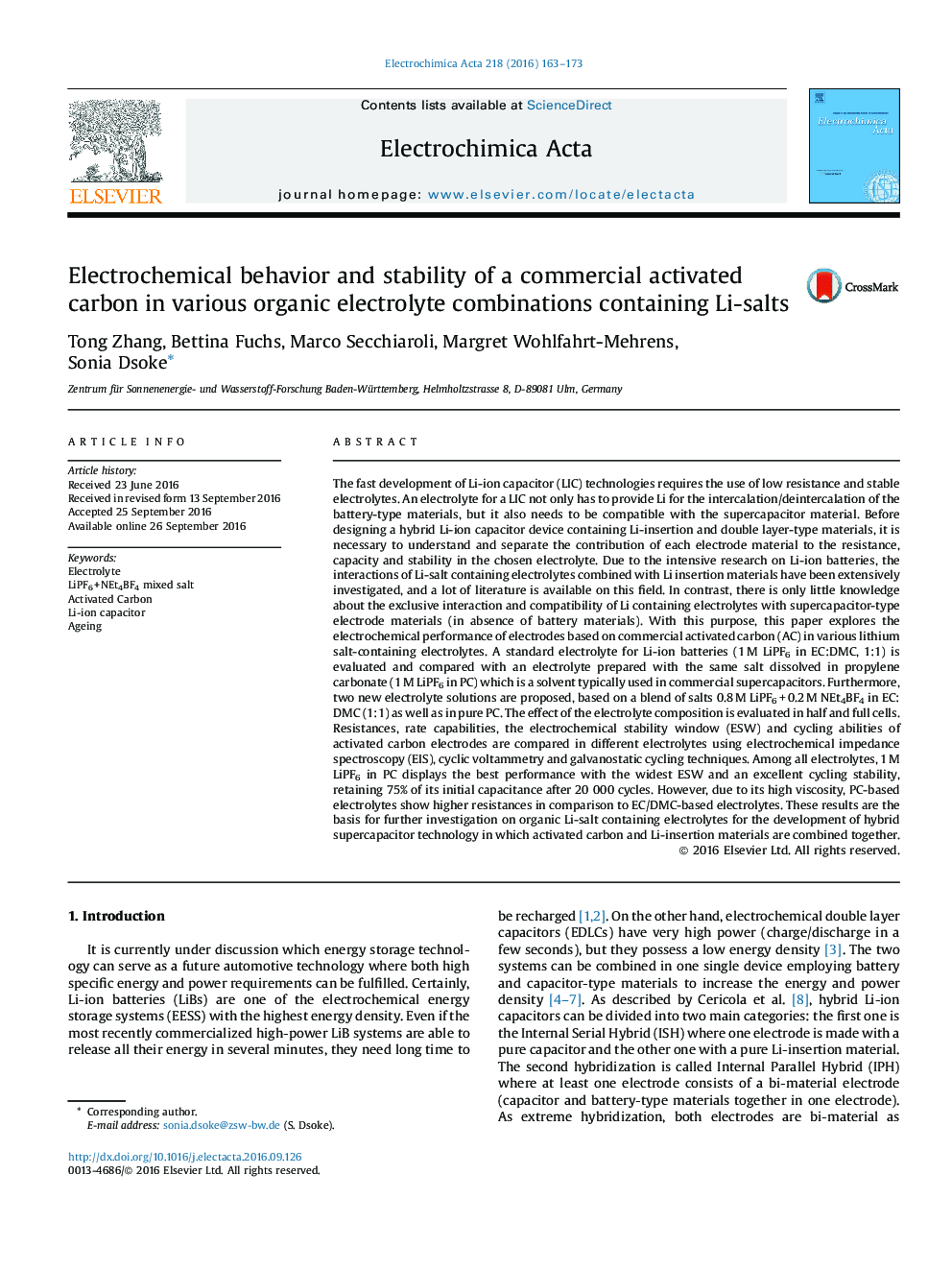| کد مقاله | کد نشریه | سال انتشار | مقاله انگلیسی | نسخه تمام متن |
|---|---|---|---|---|
| 4767656 | 1424139 | 2016 | 11 صفحه PDF | دانلود رایگان |
- 1Â M LiPF6 in PC displays the widest electrochemical stability window among others couples electrolyte/activated carbon.
- Electrolytes based on EC-DMC show lower impedance than electrolytes containing PC.
- 1Â M LiPF6 in PC has the highest cycling stability with 75% of capacitance retention after 20 000 cycles.
The fast development of Li-ion capacitor (LIC) technologies requires the use of low resistance and stable electrolytes. An electrolyte for a LIC not only has to provide Li for the intercalation/deintercalation of the battery-type materials, but it also needs to be compatible with the supercapacitor material. Before designing a hybrid Li-ion capacitor device containing Li-insertion and double layer-type materials, it is necessary to understand and separate the contribution of each electrode material to the resistance, capacity and stability in the chosen electrolyte. Due to the intensive research on Li-ion batteries, the interactions of Li-salt containing electrolytes combined with Li insertion materials have been extensively investigated, and a lot of literature is available on this field. In contrast, there is only little knowledge about the exclusive interaction and compatibility of Li containing electrolytes with supercapacitor-type electrode materials (in absence of battery materials). With this purpose, this paper explores the electrochemical performance of electrodes based on commercial activated carbon (AC) in various lithium salt-containing electrolytes. A standard electrolyte for Li-ion batteries (1Â M LiPF6 in EC:DMC, 1:1) is evaluated and compared with an electrolyte prepared with the same salt dissolved in propylene carbonate (1Â M LiPF6 in PC) which is a solvent typically used in commercial supercapacitors. Furthermore, two new electrolyte solutions are proposed, based on a blend of salts 0.8Â M LiPF6Â +Â 0.2Â M NEt4BF4 in EC:DMC (1:1) as well as in pure PC. The effect of the electrolyte composition is evaluated in half and full cells. Resistances, rate capabilities, the electrochemical stability window (ESW) and cycling abilities of activated carbon electrodes are compared in different electrolytes using electrochemical impedance spectroscopy (EIS), cyclic voltammetry and galvanostatic cycling techniques. Among all electrolytes, 1Â M LiPF6 in PC displays the best performance with the widest ESW and an excellent cycling stability, retaining 75% of its initial capacitance after 20 000 cycles. However, due to its high viscosity, PC-based electrolytes show higher resistances in comparison to EC/DMC-based electrolytes. These results are the basis for further investigation on organic Li-salt containing electrolytes for the development of hybrid supercapacitor technology in which activated carbon and Li-insertion materials are combined together.
85
Journal: Electrochimica Acta - Volume 218, 10 November 2016, Pages 163-173
